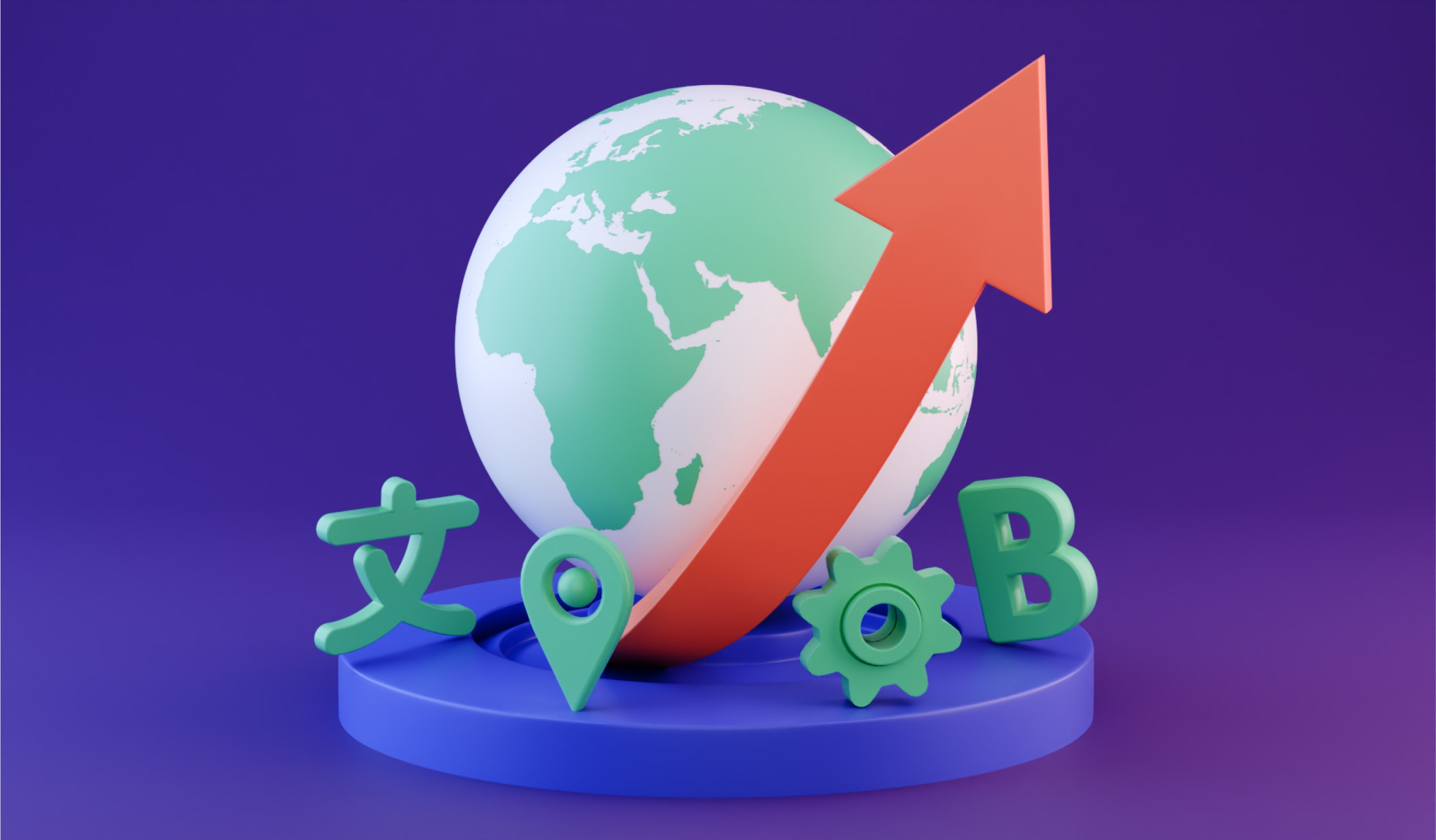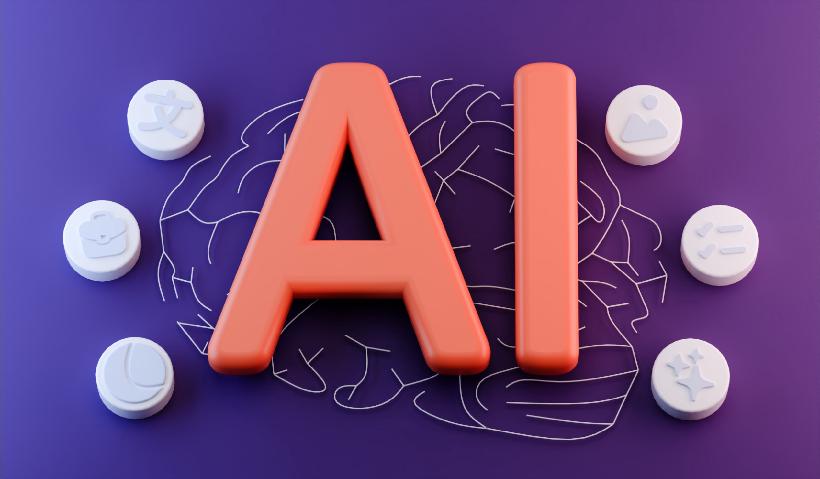2025 is here! And we are all so excited for what it is about to bring, especially when it comes to localization and how far the industry can go. After a remarkable 2024, the world of translation and localization is ready to grow even further.
The main player to watch here is, of course, AI. The recent advancement in machine learning, expanding databases used to train chatbots, and overall excitement about what artificial intelligence can do for the world are all dominating conversations. But it's not the only development to keep an eye on in 2025.
As we are slowly adjusting to being almost a quarter of the way through the 21st century, let's take a moment to review the main trends that will shape the industry of localization in 2025 and beyond.
Overview of the Localization Industry in 2025
Overall, the industry is doing pretty well. Propelled by tech advances and an increased interest in multilingual diverse content, localization is enjoying limelight and perhaps even heading towards its heyday? Time will tell, but in the meantime let's review some key numbers and growth drivers.
Growth and Market Projections
Localization industry value? Approximately $41.8 billion (projected compound annual growth rate (CAGR) of 2.02%)
Translation services market? Estimated at $27.76 billion (CAGR of 4.0%)
Localization software market size? Projected to reach $2.328 billion by 2025
Projections for the localization software market? Expected to grow to $4.217 billion by 2033 (CAGR of 7.5% between 2025 and 2033)
These numbers do paint a very positive picture. Now, on to the drivers of this growth.
Key Drivers of Change
This is a short table of reasons why localization efforts all over the world are thriving by yours truly. Not exhaustive by any means.
| Key Factor | Description | Impact |
|---|---|---|
| Increased Globalization | Businesses are expanding into emerging markets, necessitating localized content to engage diverse audiences. | Increased demand for culturally relevant and localized solutions. |
| Advancements in AI and Machine Translation | Technological innovations are enhancing efficiency and scalability in localization processes. | Localization becomes more accessible to businesses of all sizes. |
| Rising Demand for Multilingual Content | Consumers prefer interacting with content in their native languages. | Drives comprehensive localization strategies to meet consumer expectations. |
| Hyper-Personalization of Content | Customers value tailored messages for specific cultural and linguistic groups, companies respond with better localization strategies. | Boosts customer engagement and loyalty through relevant content. |
| Regulatory Compliance | Stricter regulations require legal documents and guidelines in local languages. | Compels businesses to invest in accurate and timely localization services. |
Localization Trends in 2025 to Keep an Eye on
The localization industry is rapidly embracing technological advances. Aspiring companies must be aware of these trends shaping the current business reality to stay afloat and abreast of all the changes to adapt content better. Let's look at localization trends for 2025 now:
Integration of AI in Localization Workflows
Perhaps the greatest achievement of AI is the way it integrates into workflows. Faster operations and scalable patterns are just what the doctor orders. Especially when it comes to localization, a process that typically uses tons of information, keys, languages, and other nuances. AI-driven tools help managers and professionals automate mundane and repetitive tasks (like translation of bulk texts and keywords) and ensure QA. This allows human translators to stay focused on what makes localization truly exceptional: cultural sensitivities, humor, witty remarks and slogans, and so on. The merge of AI translation powers and the human mind is delivering unprecedented growth, your task is just to keep up with it.
Adoption of Large Language Models (LLMs)
Ever heard of Large Language Models (LLMs)? Essentially they are
smart AI systems trained on massive amounts of text to understand and generate human-like language.
This is a genuine game changer when it comes to the language industry because machines can no longer "sound" and "read" as machines. Trained on vast datasets, these models can understand and generate texts that mimic humans and the way we interact between each other.
This is particularly important for localization, as AI tools become more nuanced and complex, reducing the time spent on manually correcting their imperfections and improving the translation output. After all, who doesn't like to delegate tasks to an instrument that does them with an ever improving efficacy?
Hyperautomation in Localization Processes
Businesses can no longer afford to do everything by hand (unless you are a fancy Italian shoemaker that makes like 100 pairs a year and sells them at exorbitant prices). When it comes to maximizing productivity, hyperautomation is the way forward. Throwing AI and machine learning into the pot and mixing it well with careful human guidance delivers top results, making it easier to tackle complex business processes. In localization, hyperautomation increases productivity, reduces time-to-market, and makes sure your texts are consistent across the board. Delivering localized content that resonates globally and meets local preferences has never been easier.
Efficient Localization Partners
Translating and localizing content alone can be a challenge even if you employ all the revolutionary methods of the current stage of AI development. That's why more and more companies choose to partner with localization software and partners that know the craft and deliver results. Blending sleek interfaces and using AI to perfect translations, platforms like Localit prioritize your company's time and resources in pursuit of a perfect localization, no matter which industry you operate in. Here's what Localit can offer your business:
Quick and Easy Translations: Localit makes translating your content into other languages super fast and accurate, so you can focus on other parts of the project.
Teamwork Made Simple: Everyone—managers, translators, and editors—can work together in one place and stay on the same page with convenient built-in chats. Send screenshots, voice notes, and designs without losing track of where you are in the project.
AI to the Rescue: Localit's AI tools help you translate loads of content quickly while keeping the quality top-notch. Pick your favorite AI translation medium (Google Translate, DeepL, ChatGPT) and get your translations in 111 available languages within seconds.
Handles All Your Files: You can easily add or tweak keys for different platforms without breaking a sweat.
Resilient and Effective: With fast processing speeds and intuitive interface, your project will get done faster than you can make a cup of coffee!
Localit also offers a free plan to test its features. Head over to localit.io to try it today!
The Role of AI in Transforming Global Content
AI is undeniably the headliner of the 2025 localization trends, there's no doubt about it. Multilingual content can now be produced with a press of a button thanks to generative AI and scalable operations. Processing large volumes of texts and materials is super easy now. And businesses across the world recognize this, including giants like Meta. Back in 2023, the company rolled out its SeamlessM4T, an AI model that can translate speech and text across 101 languages, which has only been getting smarter and better. This facilitates real-time communication while preserving the speaker's emotions and tone. But there's more.
AI-Powered Translation Tools
AI translation is no longer a simple word-for-word process of churning out clumsy equivalents in a target language. Platforms like DeepL, ChatGPT, and Google Translate (which are all offered by Localit, by the way) are now context aware with their outputs, which is simultaneously becoming increasingly culturally nuanced. Global marketing and local expectations demand focus and exceptionality, which is now a reality with faster AI productions.
What is also worth noting here is that other companies use AI powers in other spheres to enhance multilingual experience for different users. For example, VLC media player now has real-time AI subtitling, which makes it possible for people to watch videos with translations that happen at the drop of a hat in whatever language they prefer. No need for cloud services here either.
Enhancing Multilingual Content Creation
AI helps create and manage content in different languages, making sure it stays consistent and high-quality across platforms. For example, creators use AI to make realistic video avatars that can speak in multiple languages, helping them reach global audiences. A company called Synthesia makes it easy to create these AI-generated videos, so you don’t need fancy or expensive equipment. AI dubbing is also a very common practice nowadays that ensures that videos can be viewed without losing any context (this also makes your content more inclusive, just saying). Localization teams can benefit from similar tools in crafting compelling narratives for their marketing campaigns.
Balancing Automation with Human Expertise
AI is amazing for speeding up translations and creating certain types of content, but humans are still important when it comes to getting the details right (AI is still developing and by no means perfect so caution is advised). Combining the two leads to the best results.
AI does the heavy lifting: It handles big tasks like translating large volumes of text quickly and efficiently.
Humans add the finishing touch: Translators tweak the AI's work to make sure it fits the culture and context of the target audience.
Keeps it personal: Human oversight ensures the content feels natural and relatable, not like it was generated by a robot.
Adapting to the Future of Localization
The future of localization lies with technology. The more advanced AI, translation tools, and platforms get, the better results we can expect. But humans needn't worry, AI is not taking jobs away. Instead, it helps transform the current work profiles to include new functions, while simplifying ways to stay ahead of competition. Here's what needs to be on top of every business's list as they head into the world of localization in 2025 and beyond.
Building Collaborative Ecosystems
Developing collaborative ecosystems is a key part of driving innovation and addressing complex challenges in localization. By forming alliances with technology providers like Localit, translation providers, linguists, and cultural experts, companies can access diverse skills and resources. This will in turn lead to more effective and efficient localization processes. For instance, partnerships between automotive companies and mobility service providers have created comprehensive solutions that enhance customer experiences across multiple countries.
Continuous Learning and Skill Development
As the localization landscape evolves, continuous learning and skill development are crucial for professionals to stay relevant. The growing demand for digital capabilities, such as proficiency in AI and machine learning, requires a workforce that is adaptable and committed to lifelong learning. In regions like the Arabian Peninsula, initiatives are underway to bridge the digital skills gap and empower local talent to participate effectively in the digital economy.
Preparing for Ethical and Regulatory Challenges
The integration of AI and other advanced technologies in localization introduces ethical and regulatory considerations that businesses must address. Navigating the complex landscape of data privacy, algorithmic bias, and compliance with international standards requires a proactive approach. Organizations should establish ethical guidelines and collaborate with policymakers to ensure responsible AI adoption, thereby maintaining public trust and avoiding potential legal pitfalls.
Don't Just Explore the Future of Localization — Be It
The key trends shaping the language industry aren’t just about technology or fancy tools. They’re about transformation, creativity, and connection. Localization cannot be a passive process anymore. It’s an active leap toward global collaboration and cultural understanding. The localization industry is set to push boundaries, taking us beyond language into a realm where content feels personal, seamless, and alive. So don’t just watch from the sidelines—dive in, experiment, and be part of the revolution that’s reshaping the world, one translation at a time.

 The Ultimate Guide to Software Localization: Localize Software with Best Practices
The Ultimate Guide to Software Localization: Localize Software with Best Practices AI Localization: How Artificial Intelligence Is Changing the Landscape of Localization and Translation
AI Localization: How Artificial Intelligence Is Changing the Landscape of Localization and Translation Localize Like a Pro: How to Choose the Right Localization Languages for Your Business?
Localize Like a Pro: How to Choose the Right Localization Languages for Your Business?